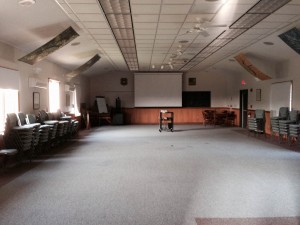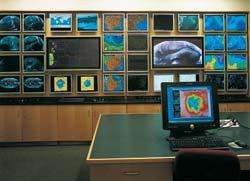This year marked the 51stHubbard Brook Cooperator’s meeting held at the Forest Service Headquarters at Hubbard Brook on July 9-10th. These meetings comprised two days of 8 minute talks rich of knowledge, data and intellectually stimulating science being done right here at Hubbard Brook! We, the soil science REU girls (Kelly and Cailene), as well as David, the meteorology guy, each gave talks at these meetings in front of our mentors, peers and all the scientists of HBRF, including the brilliant Gene Likens, one of the founding fathers of Hubbard Brook!! We prepared for these talks for quite some time, Kelly focusing on “C-horizon permeability and the Hubbard Brook Hydropedology Initiative," Cailene on “Soil Juice: Soil expulsion as an alternative method to traditional lysimetry” and David on "The atmospheric and environmental conditions responsible for high stream flow." We approached these meetings with much enthusiasm, a little bit of nervousness, and a whole lot of practice. Here’s a bit more on our individual experiences:
Kelly: It was such a wonderful opportunity being able to attend the Cooperator’s meeting this year. So much diverse research goes on here, ranging from microbiology to social reactions to climate change research, from meteorology to orchid studies, and the meetings are a wonderful way to bring the large and heterogeneous community of Hubbard Brook together to learn about all that goes on beyond our narrow research focuses. So much of the material covered flew completely over my head: it was both humbling and inspiring to realize just how much I have yet to learn in my field.
Presenting at the meetings myself was, admittedly, fairly nerve-racking. Cailene and I, who have worked together closely throughout the summer and generally function to keep each other sane, in this case only served to enable each other’s madness. I think we are both naturally anxious people, and the prospect of presenting our research in front of such a large and expert crowd was, to say the least, intimidating. I do not know how many times we practiced our presentations for each other, or how many silent glances of mutually-felt panic we exchanged in the days leading up to the meetings, but I do know that by the time I actually stood up to present, Cailene had heard my talk enough times that she probably knew it better than I did! Thank you Cailene, I’m sure I would never have been able to do this without your support! Though it was stressful anticipating the meetings, looking back in retrospect I am extremely grateful that I had the chance to present at the meetings, and in fact just to have been able to attend at all. It was a truly enjoyable and enlightening experience from start to finish.
Cailene: I LOVE the Hubbard Brook Cooperator’s meeting! I feel fortunate to have been a part of such a unique event that allows attendees to share and learn about the wonderful projects that make the Hubbard Brook Research Foundation what it is. As exhausting and mentally stimulating as these two days of meetings are, they are an incredible opportunity for scientists to share research and receive feedback from the supportive, intellectual curious community of individuals who attend the meetings. Accordingly, I am thankful to have had the opportunity to share my own REU project with the HB community. It did, however, come with its challenges…
I’ve never been much of a public speaker, so the thought of giving a talk about my project to a sea of brilliant scientists had me shaking in my hiking boots. Together, Kelly and I spent hours upon hours practicing our talks and making endless corrections to our PowerPoint presentations. Kelly, my mentor Dr. Scott Bailey and Maggie Burns (who is a research tech and good friend at HB) were extremely supportive and helped make my talk a success that I look back on with a smile (Many thanks to those three!). From preparing my data and making the presentation, to delivering the talk with confidence and enthusiasm, the entire process was an invaluable learning experience. The best part of all, however, was getting feedback from scientists of all different fields and leaving the meetings with new and exciting ideas for my project! The meetings were a wonderful experience and I am incredibly grateful to have had the opportunity to be a part of this annual event!
David: This was my second year giving a presentation at the annual cooperative meeting. I truly enjoyed the opportunity. Though it is definitely a nerve racking situation to stand in front of so many highly regarded and incredibly intelligent people, it was something that allowed me to learn and grow in so many ways. Listening to the presentations of others and seeing the passion they all had for their project’s was truly inspiring. The value of these meetings is truly priceless. The amount of knowledge I gained within that 2 day span is incredible. The feedback that other scientists from many different backgrounds provided me has propelled my project forward. If you’re a lover of science and you have the opportunity to attend the meetings, do not pass it up! I look forward to attending again.
I was also immensely impressed with the presentations of my fellow REU’s. They were able to grab my attention and keep me wanting more. Now that’s saying something because they were talking about soil and I am a meteorologist! I give huge props to all of the speakers at this year’s meetings and especially to Cailene and Kelly!














